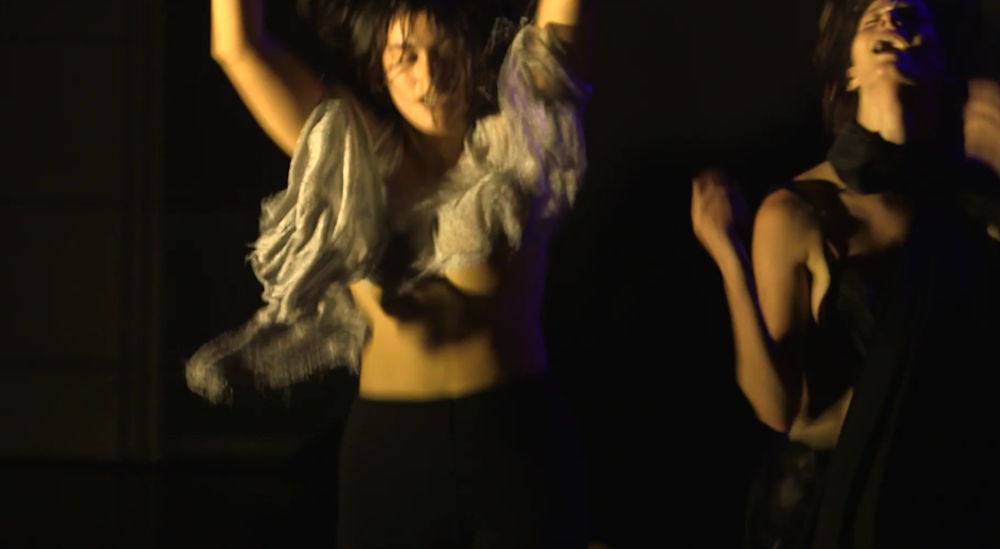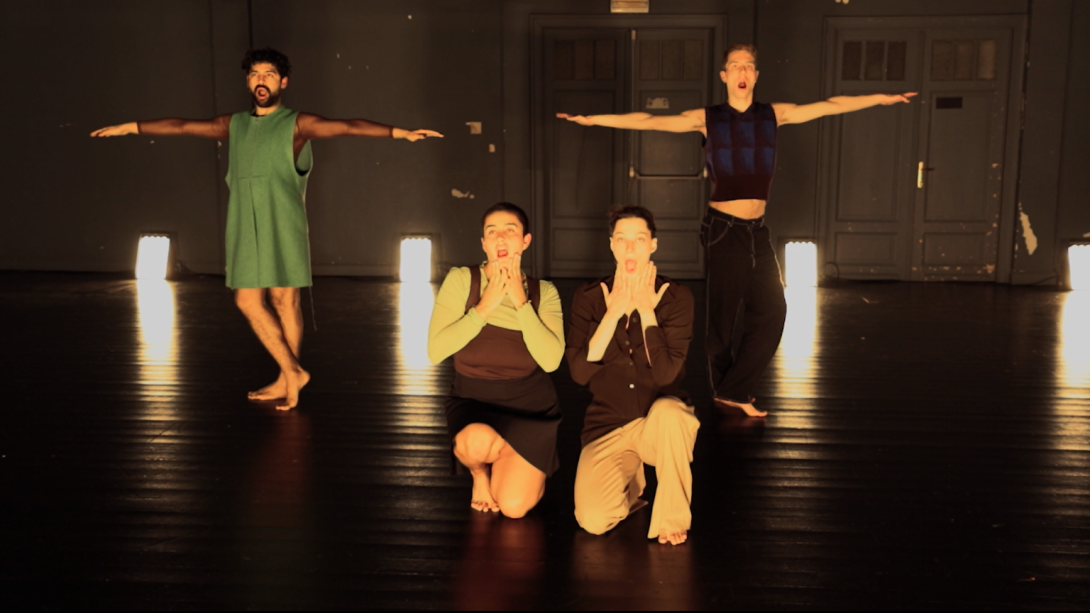| Mon | Tue | Wed | Thu | Fri | Sat | Sun |
|---|---|---|---|---|---|---|
|
1
|
2
|
3
|
4
|
5
|
6
|
7
|
|
8
|
9
|
10
|
11
|
12
|
13
|
14
|
|
15
|
16
|
17
|
18
|
19
|
20
|
21
|
|
22
|
23
|
24
|
25
|
26
|
27
|
28
|
|
29
|
30
|
31
|
|
|
|
|
Read more - Feral
Here you find a short description of the performance and the credits.
On Feral
text by Lydia Mcglinchey
During my MA degree I was writing about the way in which landscape media influenced and formed national identity in Australia. Afterwards, I continued my interest in landscape media through dance and scenography, which is where the performance Feral emerged from. Feral is a series of four staged landscapes, performing in it is myself, Nathan Ooms, Mario Barrantes Espinoza, and Keren Kraizer. We perform together with a series of textile pieces used as scenography, which were hand woven by myself and textile designer Elena Vloeberghen. Jan Maertens has been developing a light design for the work, and Iris Therasse has developed the soundtracks.
I’m going to start introducing this work by introducing some of the ideas that were very formative in the making process. Afterwards, I’ll explain a bit about the term feral and its relation to ecological movements.
The Scenographic
Feral is a series of four staged landscapes, therefore the notion of scenography is very important. Dance, music, light, and costumes were all considered equally scenographic to the actual decor hanging in the space. All elements of the stage are considered to amalgamate into a scene, a landscape, or an atmosphere.
Landscape
In Western art history landscape representation has historically been focused on staging the relation between humans and nature, the natural and the man-made or artificial. In this work, we understand ‘landscape’ as a media which proposes conceptions about identity, humanness, and nature by means of staging them as imaginary places. Landscape media, therefore, influences the way individuals and groups relate to the environment. We use landscape as a site of dispute where alternative readings of space and bodies emerge.
Charge
In this work, we deny the neutrality of the body and the neutrality of the black box posed and normalized in post-modern dance. The body is considered an expressive entity always ‘charged’ with this or that. The body is never considered neutral or void of expression. We give texture and form to the space through our textiles, sound, and light work which we also consider to ‘charge’ the space, creating tactility, tones, and different volumes. The body and the space are always charged with this or that, they are never done with being undone.
Transformation
The work is structured as a series of four contrastingly different landscapes because I wanted to create a dramaturgy where the body always defies its prior constitution. We invite the audience to read the bodies differently, again and again, affirming the potential for re-reading, conceiving, and re-conceiving. The performers transform through unified voices, larger-than-life figures, inanimate entities, and generic surfaces
Feral
The title Feral ties together my thinking about landscape representation and ecological movements. Feral is a scientific term which refers to an animal which was once domesticated, who has now left its domesticated environment. A feral animal is an animal which is no longer domesticated and can also never return to being wild. The term feral has recently been taken up by several green movements that idealize rewilding, re-indigenizing, and returning to nature. These movements seek and affirm notions of nature vs culture, purity, and authenticity. Their desire to ‘go back to nature’ or re-indigenize, often ends up in bizarre appropriation of indigenous notions of identity and belonging. Frequently these movements want to ‘other’ themselves from what they consider normative society, seeking a more ‘real’ or ‘authentic’ position (there are many living examples of this coming out of the hippie movements).
In opposition to those ecological and environmentalist circles which seek a return to nature and obtention of moral purity, I propose feralness, as a state of brokenness, of already polluted, of living with toxicity, and ruin. I propose feralness as the impossibility of return to a ‘natural state of things’ but rather a radical recognition of what has happened and the sort of mess we are living through: the post-industrial, the filthy, the unhealed, the artificial, the implicated, the displaced.

